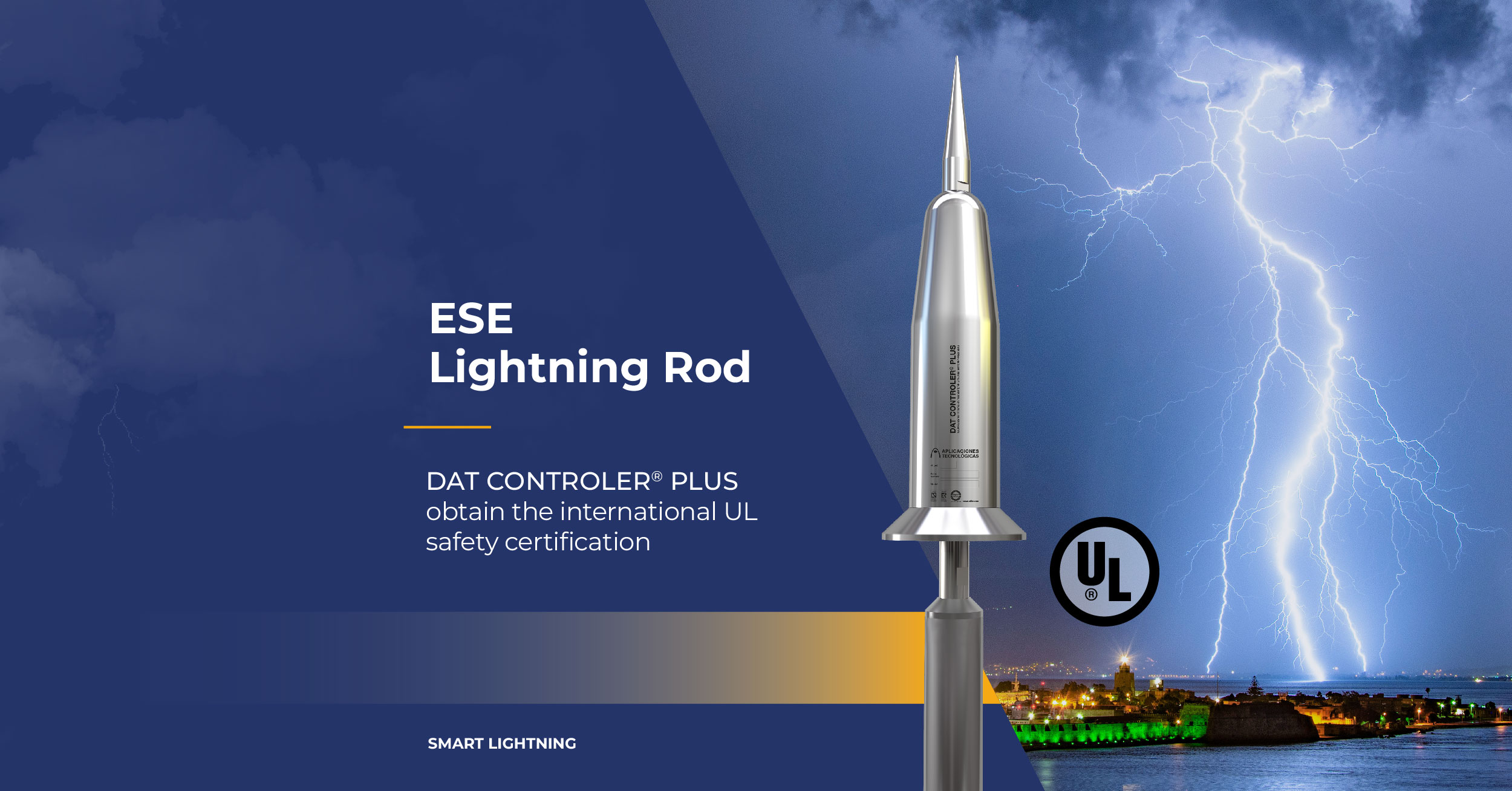Step and touch voltages derive from the dispersion of the lightning current, conducted to earth by the lightning protection system. The UNE 21186:2011 standard establishes a series of protection measures to avoid harm to people. At Aplicaciones Tecnológicas we are experts in protection against electrical storms, offering advanced Smart Lightning services and products that ensure the protection of people, equipment and goods.
When a lightning rod intercepts a lightning strike, its current is conducted to the ground, where it tends to dissipate radially from the point of impact, both on the surface and penetrating the ground. The passage of current generates a potential gradient in the ground depending on the resistivity and characteristics of the soil.
This current dispersion can cause damage, even death, due to step and touch voltage to people and animals in the surroundings of the lightning protection system.
Step and touch voltages: what are they?
Step voltages are generated when there are two points of contact with the ground and each of them is at a different potential. The difference in potential causes part of the current to flow through the element in question, which may be a person or an animal. The potential difference within a few centimetres can be very high when the lightning current is scattered in the ground.
Contact voltages, on the other hand, occur when a part of a person or animal is in contact with a point through which the lightning current flows and also with the ground. In this way, part of the lightning current passes through the body.
Consequently, in both cases, the person or animal can be damaged by electric shock. The effects can therefore be devastating, especially in areas with low resistivity where the potential gradients are much higher.
The earthing of lightning protection systems is designed to encourage the current to disperse quickly and efficiently, minimising surges and return currents. However, even when the lightning protection system is perfectly installed, a certain risk of touch and step voltages for people in the vicinity cannot be avoided.
Protective measures against step and touch voltages
The Spanish Standard UNE 21186:2011 refers to protection against lightning by means of Early Streamer Emmision air terminal (also known by the acronym ESE). The document indicates provisions of the minimum conditions to ensure statistically effective protection1.
Normative annex D of UNE 21186:2011 deals with the protection of persons against electric shock caused by step and touch voltages.
The standard considers the risk to be low (never zero, but tolerable) if the probability of people being in the place of the downburst when there is a storm is low, which is most common. Similarly, it considers the risk as tolerable if the natural conductors of the structure ensure electrical continuity (by several columns of a metallic structure or by several interconnected steel pillars). A further condition for a tolerable risk is that the resistance of the surface layer of the ground, up to 3 metres away from the down conductor, is not less than 100 kΩ, which is achieved if there is at least 5 cm of asphalt or 15 cm of gravel on the ground above the earth connection.
If the ground is not asphalted and the likelihood of people being in the vicinity of the downpipe is considered high, a sign should be used to warn of the danger. In addition, a cross-linked polyethene protection pipe can be laid to prevent touch voltage and earth equipotentialisation meshes can be installed around the downspout (3 metres) to prevent step voltage.
In addition, in the standard, the risk related to damage to living beings due to contact and step voltages is considered a component within the risk calculation of the structure.
Annex A, UNE 21186:2011 establishes probability values that a discharge in the structure will cause damage to living beings due to both types of stresses. The probability values take into account different aspects provided in Annex D explained above, such as the electrical insulation of conductors, equipotentialisation of the ground and warning signals.
The probability of damage to living beings from step and touch voltages is considered negligible when the current is spread over multiple paths (e.g. in a metallic structure), or if physical restrictions have been taken.
At Aplicaciones Tecnológicas S.A. we offer Smart Lightning services for lightning protection projects, as well as installation, revision and maintenance. We also offer the most technologically advanced products in smart lightning rods with DAT CONTROLER® REMOTE triggering device, as well as conductors and materials for earthing. All our solutions follow the latest standards to avoid the risks of step and touch voltages.
You can contact our experts at the following link for more information about step and touch voltages and the Smart Lightning range of services and products.
You can also register for our online training on topics related to lightning safety which can be found on our Training and Webinars page.
References
- Asociación Española de Normalización. UNE 21186:2011 Protección contra el rayo: Pararrayos con dispositivo de cebado. (2019).



